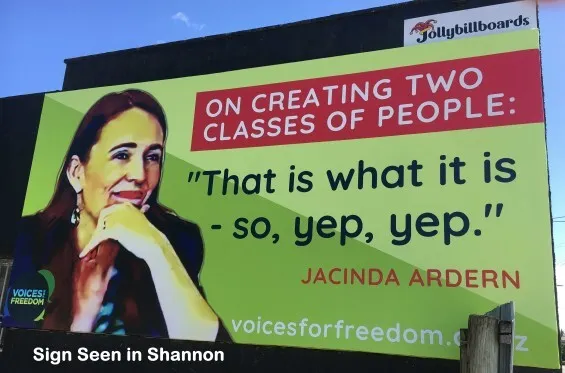With the 2023 elections starting to gear up, you may have noticed a shift in the political sphere. We appear to be increasingly moving away from the left/right culture wars toward an uprising against the political establishment.
This has provided the freedom movement with choices of different political parties. In 2020, there were a number of political parties opposed to the lockdowns and Covid response. The most prominent was Advance New Zealand, jointly led by former National MP Jamie Lee Ross and musician Billy Te Kahika Jr. Others on the fringes opposing the mainstream included Vision New Zealand, led by the Tamakis; the Outdoors Party, recently merged with Ban 1080; the One Party, led by Stephanie Harawira and Edward Shanley; and the New Conservatives, led by Leighton Baker and Elliot Ikilei. There were other smaller parties around the country as well, including Social Credit, one of the oldest third parties in New Zealand.
Several more parties have formed now, including the New Nation Party formed by Wellington millionaire Michael Jacomb and Democracy New Zealand, which was launched during the Freedom Village by former National MP Matt King. But a recent political development allows different ideas to participate in democracy.
The first project is at local body level, where candidates of different beliefs and persuasions are standing up for their local communities, united under the principles of freedom and democracy. They are standing as independent candidates with their own policies, but while they are not under one (party) banner, they are affiliated with the same groups. This is because they agree on the issues but with slight differences in ideas of how to solve the issues.
There is a group which offers support and resources but does not dictate the policies of candidates. In fact, the only criterion is that the candidate believes in freedom. Strangely enough, most of these candidates have managed to independently choose a ward that is not being contested by another freedom candidate. But even if they are standing against each other, they are willing to support each other.
The second project is the one being pursued by Matt King, who is running an independent political party and campaigning as an individual brand on the platform of freedom and democracy, with the hope that the freedom movement will rally around one party.
His intent puts him in competition with the other freedom party. The public will need to decide which is most suited to represent the freedom movement in Parliament.
Matt King is offering what he believes are the most sensible and practical policies. He has positioned his party politically in the centre rather than on the left or the right, confining his policies to issues of the freedom platform but not for every issue.
This is not the first time that parties have formed in response to issues. Historically parties are formed when people in New Zealand are alarmed by the government and have lost confidence in the people in Parliament. The Maori Party, ACT and New Zealand First are examples of that.
The third project is Brian Tamaki’s idea: the merging of several different parties under the freedom banner. This idea, despite differences in opinion on other political issues, could possibly allow different freedom groups and parties to unite under one banner: the theory being that it is better to unite than to compete with each other and risk splitting the vote. A coalition is formed on the platform of freedom and democracy with the intention of getting into Parliament. The last such coalition in New Zealand was the Alliance led by Jim Anderton back in the 90s which included the Green Party. This worked because of the relatively similar values that the parties shared.
So which strategy is the best one?
At a local body level this can work quite effectively. Party politics generally don’t play a huge part at local government level. The current model gives candidates a lot of freedom and independence in the way they campaign while getting advice and support from the project. This makes sense as each local community and therefore each council has a specific vision that fits with their community. So while candidates are affiliated, they are not actually standing as members of these groups.
The strategy being employed by Matt King is something I have seen in Australia, where the different freedom parties stand on the same platform while contesting the elections and compete with each other while continuing to support each other regardless.
It is important to note that Australia uses the single transferable voting system which perhaps explains why this strategy can be used by the freedom parties.
Despite competing with each other, the freedom parties have had some success getting into the Australian Parliament.
That has delivered two things. Firstly, it has allowed the freedom community to seriously consider who would best represent them in Parliament. Secondly, it has shown the political establishment how much opposition there has been to the covid lockdowns and the authoritarianism of the last two years.
Despite the competition, the freedom parties have been willing to support each other, forming an informal coalition. This is a different situation to ours, as the STV system leaves the possibility that a minor party can get in. Our MMP system still forces our freedom parties to compete with each other for votes.
Despite our political or philosophical differences, surely all of us want the best for this country.









